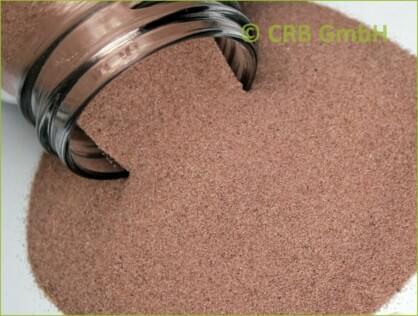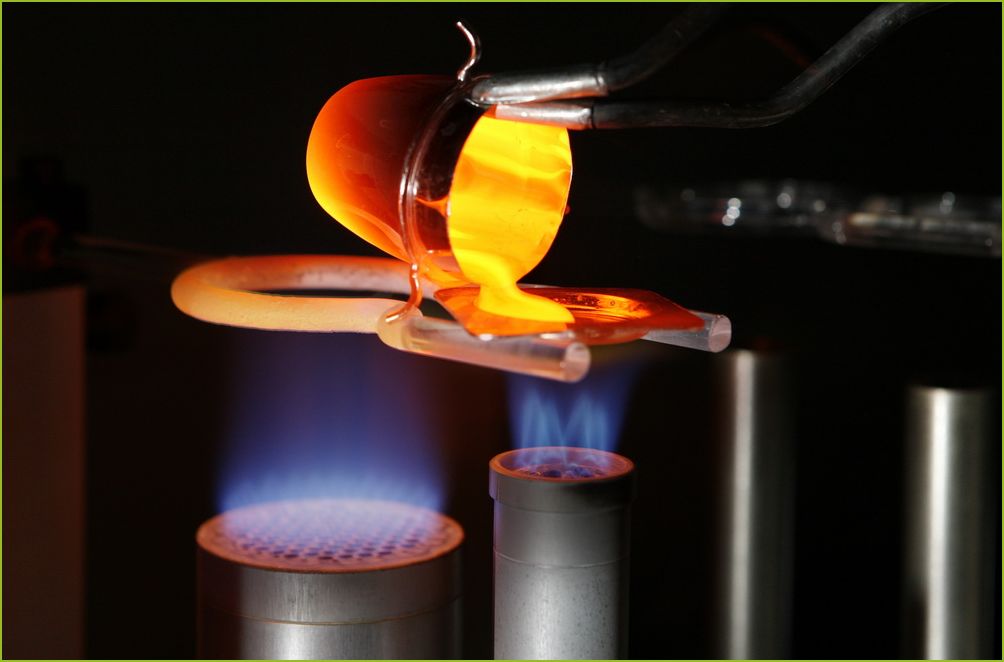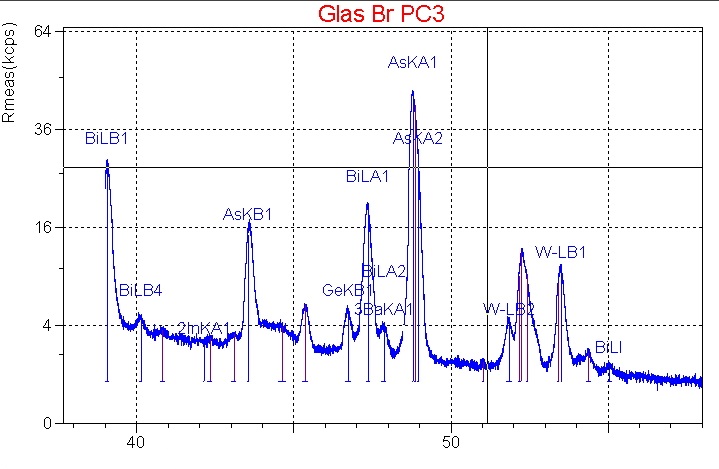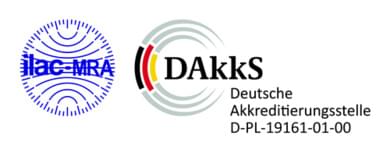
Spectrométrie de fluorescence X, SFX, de zircon, de baddeleyite, de briques contenant du zircon.
Zusammensetzung
Zirkonsilikat, Zirkon: ZrO2 + HfO2 ca. 63-67 %, Rest SiO2
Baddeleyit: ZrO2 + HfO2
Zirkon-haltigen Steine bis 35 % ZrO2
Rohstoffe
Zur Herstellung reiner Zirkonsilikat-Werkstoffe und gesinterter Alumina-Zirkonia-Silika-, AZS-Werkstoffe aus Zirkon, Mullit, Baddeleyit und Korund
Verwendung
Als korrrosionsbeständige Stein in der Glasindustrie, Stahlindustrie
Normes et directives pour la spectrométrie de fluorescence X, SFX, de zircon, de baddeleyite, de briques contenant du zircon
- ISO 29581-2:2010-03 - Cement - Test methods - Part 2: Chemical analysis by X-ray fluorescence
- DIN EN ISO 12677:2013-02 - Chemical analysis of refractory products by X-ray fluorescence (XRF) - Fused cast-bead method
- DIN EN ISO 21068-1:2008-12 - Chemical analysis of silicon-carbide-containing raw materials and refractory products - Part 1: General information and sample preparation
- DIN EN ISO 21068-2:2008-12 -Chemical analysis of silicon-carbide-containing raw materials and refractory products - Part 2: Determination of loss on ignition, total carbon, free carbon and silicon carbide, total and free silica and total and free silicon
- DIN EN ISO 26845:2008-06 - Chemical analysis of refractories - General requirements for wet chemical analysis, atomic absorption spectrometry (AAS) and inductively coupled plasma atomic emission spectrometry (ICP-AES) methods
- DIN EN 196-2:2013-10 - Method of testing cement - Part 2: Chemical analysis of cement
- DIN EN 15309:2007-08 - Characterization of waste and soil - Determination of elemental composition by X-ray fluorescence
- DIN EN 62321-3-1:2014-10 - Determination of certain substances in electrotechnical products - Part 3-1: Screening - Lead, mercury, cadmium, total chromium and total bromine by X-ray fluorescence spectrometry
- DIN 51001:2003-08 - Testing of oxidic raw materials and basic materials - General bases of work for X-ray fluorescence method (XRF)
- DIN 51001 Beiblatt 1:2010-05 - Testing of oxidic raw materials and basic materials - General bases of work for X-Ray fluorescence method (XRF) - General survey on disintegration methods referred to groups of materials for the determination of test specimens for XRF
- DIN 51081:2002-12 - Testing of oxidic raw materials and materials - Determination of change in mass on ignition
- DIN 51418-1:2008-08 - X-ray spectrometry - X-ray emission- and X-ray fluorescence analysis (XRF) - Part 1: Definitions and basic principles
- DIN 51418-2:2015-03 - X-ray spectrometry - X-ray emission and X-ray fluorescence analysis (XRF) - Part 2: Definitions and basic principles for measurements, calibration and evaluation of results
- DIN 51719:1997-07 - Testing of solid fuels - Solid mineral fuels - Determination of ash content
- DIN 51729-10:2011-04 - Testing of solid fuels - Determination of chemical composition of fuel ash - Part 10: X-Ray Fluorescence Analysis
|
|||||
 Analyse quantitative d’une fusion par la spectrométrie de fluorescence X
Analyse quantitative d’une fusion par la spectrométrie de fluorescence X
En passant sur les éléments marqués en vert, vous verrez la
- zone de calibration (zone) et
- la limite de détection pratique (LOD)

|
||||||||||||||||||||||||||||||||||||||||||||||||||||||||||||||||||||||||||||||||||||||||||||||||||||||||||||||||||||||||||||||||||||||||||||||||||||||||||||||||||||||||||||||||||||
À noter:
Pour exécuter une analyse conformément aux normes, nous avons besoin de matériel d’échantillonnage fin (<63µm) et séché (105°C), destiné à l’analyse, ainsi que la valeur de la perte par calcination (LOI).>
Nous proposons également d’autres services, comme la pulvérisation, le séchage et la détermination de la perte par calcination, conformément à la liste des prix SFX

Analyse quantitative par spectrométrie de fluorescence X à base d’une fusion, portant sur 12, 16, 20, 30 ou 40 éléments, conformément aux normes DIN EN ISO 12677, DIN EN 15309, DIN EN 196-2.
Procédé destiné à l’analyse d’échantillons oxydiques et oxydables constitués des plus diverses compositions, comme p. ex. le verre et les fibres de verre, les sols, les roches, les matières premières minérales, les matériaux de construction céramiques ou minéraux non-extractibles, et autres.
Dans ce procédé, l’échantillon est mélangé avec un fondant (tétraborate de lithium), fondé sous atmosphère oxydante, trempé comme pastille de verre homogène et analysé comme telle avec une précision élevée.
Analyse par screening portant sur 71 éléments
Analyse par screening portant sur 71 oxydes/éléments. Sensibilité de détection : 250 µg/g
|
||||||||||||||||||||||||||||||||||||||||||||||||||||||||||||||||||||||||||||||||||||||||||||||||||||||||||||||||||||||||||||||||||||||||||||||||||||||||||||||||||||||||||||||||||||
À noter:
Pour exécuter une analyse conformément aux normes, nous avons besoin de matériel d’échantillonnage fin (<63µm) et séché (105°C), destiné à l’analyse, ainsi que la valeur de la perte par calcination (LOI).>
Nous proposons également d’autres services, comme la pulvérisation, le séchage et la détermination de la perte par calcination, conformément à la liste des prix SFX
 Le logiciel de paramètres fondamentaux Omnian permet la SFX indépendante de la matrice, quantitative, semi-quantitative ou qualitative des échantillons inconnus dotés de caractéristiques matérielles et de compositions les plus diverses (inorganiques et organiques). Les échantillons peuvent être analysés sous forme préparée ou, en cas de composition (résistant aux rayons X et au vide !) et état de surface approprié, sans préparation préalable et de manière non destructive. Il est possible de déterminer des concentrations d’éléments entre la limite de détection (normalement 250 µg/g) et 100 %.
Le logiciel de paramètres fondamentaux Omnian permet la SFX indépendante de la matrice, quantitative, semi-quantitative ou qualitative des échantillons inconnus dotés de caractéristiques matérielles et de compositions les plus diverses (inorganiques et organiques). Les échantillons peuvent être analysés sous forme préparée ou, en cas de composition (résistant aux rayons X et au vide !) et état de surface approprié, sans préparation préalable et de manière non destructive. Il est possible de déterminer des concentrations d’éléments entre la limite de détection (normalement 250 µg/g) et 100 %.

